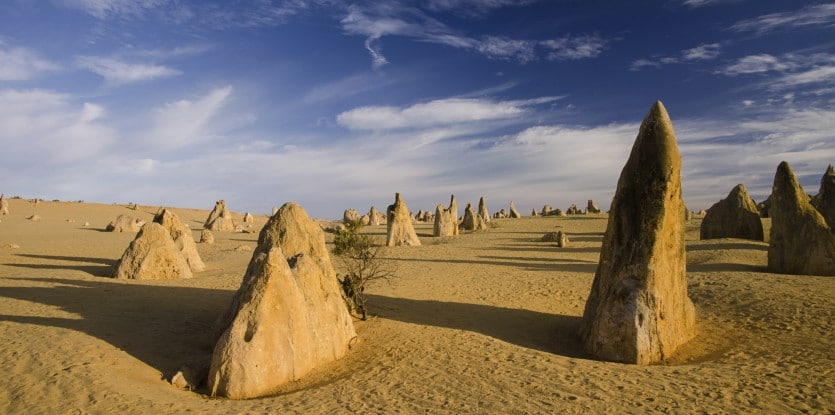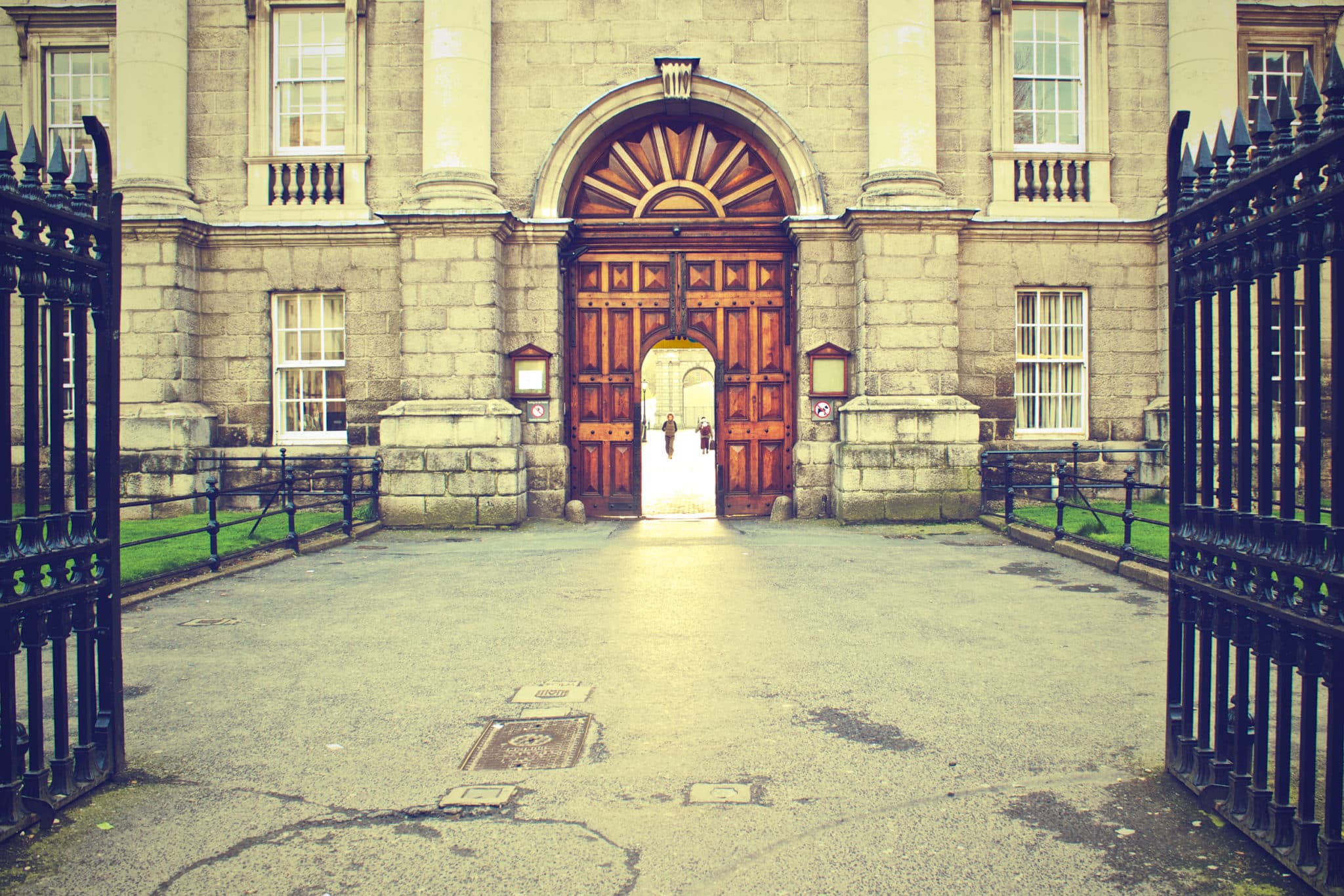And G-d revealed Himself to [Abraham], in the Plains of Mamre, as he sat in the doorway of his tent in the heat of the day
Genesis 18:1It was the third day following Abraham’s circumcision, and G-d came to visit him to fulfill the mitzvah of visiting the sick
Rashi on verse; Talmud, Bava Metzia 86b
In 1798, the founder of Chabad Chassidism, Rabbi Schneur Zalman of Liadi, was arrested on charges of treason against the Czar and imprisoned in the Peter-Paul Fortress, situated on an island in the Neva River in Petersburg. During his 53-day imprisonment, the Rebbe was frequently ferried across the river to a building on the mainland to be interrogated by the Czar’s secret police.
One night, as the small boat was making its way across the river, the sky cleared and a quarter moon illuminated the skies. Wishing to avail himself of the opportunity to fulfill the mitzvah of kiddush levanah (“sanctification of the new moon”),[1] Rabbi Schneur Zalman requested from the official in charge that the boat be stopped for a few minutes. The official refused.
Suddenly, the boat came to a complete halt. Nothing the ferryman could do would advance it a single oar-sweep. Rabbi Schneur Zalman stood up in the boat and recited the first few verses of Psalm 148, which preface the blessing of the moon.
But the Rebbe did not continue with the recitation of the blessing itself. As suddenly as it had halted, the boat resumed its movement toward the opposite shore. Again Rabbi Schneur Zalman turned to the official in charge and asked that the boat be halted.
“If you give me your blessing, in writing,” said the official, “I’ll stop the boat.”
The Rebbe promised to fulfill his request. At a word from the official, the ferryman pulled in his oars and the Rebbe proceeded to perform the mitzvah of kiddush levanah.[2]
The Decree
This story demonstrates the principle that the mitzvot (divine commandments) of the Torah are designed to be acted out within the natural world, not to overwhelm it and supersede it. In the words of the Midrash,
When G-d created the world, He decreed: “The heavens are G-d’s, and the earth is given to man.” [3] But when He wished to give the Torah to Israel, He rescinded His original decree, and declared: “The lower realms may ascend to the higher realms, and the higher realms may descend to the lower realms.” [4]
G-d is infinite, beyond all definition and categorization; the physical reality is finite, and can relate only to definable and categorizable realities. So the very nature of creation dictates that an unbridgeable gulf separate the earthly from the divine. Man may reach for heaven, but the limitations of the physical state invariably shackle him to earth. G-d may make an appearance on earth, dispelling its materiality and corporeality; but this means that the very characteristics that make the earth “earthly” have been suspended. No connection has been established between the lower realms and the higher realms, for at such times, the lower realms are no longer “lower realms.”
This was the prevailing state of affairs before G-d gave us His Torah on Mount Sinai. Man was capable of great, noble, even holy deeds; but all human achievement was confined either to the “lower” or the “higher” realms—to the physical or to the supernal dimensions of existence. Man could develop and refine his physical self and world; he could even profoundly influence the supernal worlds and G-d’s relationship with His creation; but he could not bridge the gap between the two realms. He was unable to sanctify the physical—to make G-d a present and palpable reality in his life. The earthly and the G-dly remained two distinct, self-contained worlds.
This “decree” was rescinded with the revelation at Sinai. At Sinai, G-d commanded us the mitzvot; six hundred and thirteen human deeds, involving every area of human life, were deemed by G-d to constitute the fulfillment of His will. After Sinai, when physical man takes a physical coin, earned by his physical prowess and toil, and gives it to charity; or when he forms a piece of leather to a specified shape and dimensions, inserts into it parchment scrolls inscribed with specified words, and binds them to his head and arm as tefillin; or when he bakes flour and water as unleavened bread (matzah) and eats it on the first night of Passover—he is doing a mitzvah. A finite, physical deed becomes the realization of a divine desire.
Through the mitzvot, the lower realms ascend to the higher realms without being divested of their lowliness. On the contrary: the very features and characteristics that define the earthly as “lowly”—its physicality, finiteness and tactility—serve as vehicles of connection with G-d.
Hence Rabbi Schneur Zalman’s reluctance to avail himself of any supra-natural aids to the fulfillment of a mitzvah. For to do so would counteract a most basic function of the mitzvah. The specialty of the mitzvah over other avenues of relationship with G-d lies in that even as it elevates a human deed to become the very embodiment of a divine desire, the mitzvah remains a wholly natural deed—a deed belonging to the human and physical realms of existence.
The Third Day
The principle of the “natural mitzvah” also sheds light on an episode in the life of the first Jew, Abraham.
In the closing verses of the 17th chapter of Genesis, we read how, by command of G-d, Abraham circumcised himself and all the members of his household. Chapter 18 opens by telling of a divine visit to the recuperating Abraham: “G-d revealed Himself to him in the Plains of Mamre, as he sat in the doorway of his tent in the heat of the day.”
Our sages explain that G-d came to pay Abraham a “sick call”—indeed, G-d’s visit to Abraham is cited as a source for the mitzvah of bikkur cholim, “visiting the sick.” “It was the third day following his circumcision,” says the Talmud, “and G-d came to inquire after his health.”[5]
But why did G-d wait three full days to visit the ailing Abraham? G-d’s delay is even more puzzling in light of the fact that the natural healing process following circumcision takes three days.[6]
The Talmud tells us that visiting the sick not only serves to uplift the spirits of the ill, but actually contributes to their recuperation.[7]
According to this, G-d delayed His visit to Abraham until such time as one of the primary functions of bikkur cholim was no longer operative!
Abraham’s Mitzvah
Abraham lived several hundred years before the revelation at Sinai; in his day, the “decree” dissevering the earthly from the supernal was still in force. So though he was a man with great—indeed, unprecedented—achievements in both the earthly and supernal realms, his deeds could not bridge the schism between the two worlds.
Nevertheless, as the father of the Jewish people, Abraham’s was a life that embodied the saga of a people, enfolding within it every milestone of Jewish history.[8]
The giving of the Torah at Mount Sinai also had its precedent and prototype in the life of the first Jew.
The Sinai in Abraham’s life was G-d’s granting him the mitzvah of milah (circumcision). This was the only one of the 613 mitzvot of the Torah expressly commanded to Abraham; this was the only occasion in which he was empowered to sanctify the physical,[9] to surmount the divide between the human and the divine. Indeed, it was Abraham’s fulfillment of the mitzvah of circumcision that paved the way for our empowerment at Sinai to bring together the higher and the lower realms through the observance of the mitzvot.
As the archetypal mitzvah, Abraham’s circumcision had to be a completely natural act, in keeping with the aim that the mitzvot should be enacted within the natural world and thus effect a true union between the earthly and the divine. Not only the performance of the mitzvah itself, but also the preparations for it, as well as its aftermath, had to strictly conform to the natural mold. Had G-d visited Abraham before the third day, this would have alleviated the pain and discomfort that is naturally experienced during this period of time as the result of the act of circumcision. This would have constituted a supra-natural intervention in Abraham’s mitzvah, diminishing its “naturalness” and the extent to which it bound the humanness of its observer with its divine commander.[10]
A Swath of Life
As the example of Abraham’s circumcision demonstrates, a mitzvah extends far beyond its momentary act of fulfilling the divine will. It reaches backward and forward in time to embrace all that leads up to and enables the act and all that results from it, and include them all in the encounter with G-d that the mitzvah effects.
So the cost of a mitzvah, whether it involves an outlay of money, time or effort, or even hardship or pain, should not be regarded as a “sacrifice” or “the price to pay” for an opportunity to serve the divine will. Rather, it should be welcomed as the way in which a greater area of our life is elevated to inclusion in an act of mitzvah—an act that marks the pinnacle of human achievement and our most profound medium of relationship with G-d.
Based on the Rebbe’s talks on Shabbat Vayeira, 5725 (1964) and 5750 (1989) and on other occasions[11]
___________________________________________
[1] This special mitzvah is observed during the first part of each Jewish month, no later than the midway point of the lunar orbit (the “full moon”), on a night on which the moon is clearly visible.
[2] Likkutei Dibburim, vol. IV, p. 1504. The written blessing was preserved by the official’s family. In 1869 the framed document was viewed by a Lubavitcher Chassid (Rabbi Dov Ze’ev of Kremechuk, a disciple of Rabbi Schneur Zalman’s great-grandson, Rabbi Shmuel of Lubavitch) in the home of the official’s son, a wealthy landowner with a large estate near the city of Staradube.
[3] Psalms 115:16.
[4] Midrash Tanchuma, Va’eira 15.
[5] Talmud, Bava Metzia 86; ibid., Sotah 14a.
[6] Cf. Talmud and commentaries, Shabbat 134b.
[7] “One who visits a sick person removes one sixtieth of his illness” (Talmud, Nedarim 39b). If a human visit has such an effect, a divine visit would certainly have removed Abraham’s illness entirely (cf. Nachmanides’ commentary on Genesis 18:2).
[8] “Everything that happened to the Patriarchs is a signpost for their children. This is why the Torah elaborates its account of their journeys, their well-digging and the other events [of their lives] … these all come as an instruction for the future: for when something happens to one of the three Patriarchs, one understands from it what is decreed to occur to his descendants” (Nachmanides’ commentary, Genesis 12:6; cf. Midrash Tanchuma, Lech Lecha 9; Talmud, Sotah 34a; Midrash Rabbah, Bereishit 40:8).
[9] This explains why, when Abraham wanted his servant Eliezer to take an oath, he told him to “place your hand under my thigh” (Genesis 24:2; cf. Jacob’ s similar administration of an oath to Joseph, Genesis 47:29). An oath is taken while holding a sacred object such as a Torah scroll or tefillin; here Abraham is telling Eliezer to swear on the part of his own body sanctified by the mitzvah of circumcision.
Our sages tell us that “Abraham observed the entire Torah” even though it had not yet been “officially” given at Sinai (Talmud, Yoma 28b); so Abraham studied Torah, put on tefillin, affixed a mezuzah on his doorpost, etc. It would therefore seem that he had no shortage of “sacred objects” available to him. Why, then, did he have Eliezer place his hand “under his thigh,” contrary to all common standards of modesty and propriety? But the import of Abraham’s pre-Sinai mitzvot were of a wholly spiritual nature. Since G-d had not commanded him to do them, they remained subject to the law that separated the supernal from the material; while they had a profound effect on his own soul, the souls of his descendants, and the spiritual essence of creation, they had no impact on the material substance of the universe. The single exception was the mitzvah of circumcision, whose commandment by G-d to Abraham constituted an empowerment to sanctify the physical. Hence, this was the only “sacred object” available to Abraham.
[10] At first glance it would seem that Abraham’s recuperation was achieved by supra-natural means. The Talmud tells us that the “three men” who visited Abraham on that day were three angels in disguise: one came to forecast the birth of Isaac, a second came to destroy the wicked city of Sodom, and a third—Rephael, the angel of healing—came to heal Abraham (Talmud, Bava Metzia 86b; Rashi on Genesis 18:2).
But if this were the case, why did Rephael come only on the third day? And what need was there for the angel of healing, if G-d Himself came to visit Abraham? (See note 7 above; indeed, G-d’s appeared to Abraham before the three angels.)
Our sages tell that “There is not a single blade of grass on earth below that does not have an angel in the heavens above that strikes it and says to it: ‘Grow!’” (Midrash Rabbah, Bereishit 10:6; Zohar, part I, 251a). In other words, all natural forces are, in essence, angels (“messengers”) of G-d, via which He channels His sustenance of creation. It is only that we, who relate to only the most superficial layer of our reality, perceive only the physical incarnation of these forces. (Thus Maimonides, in his Guide for the Perplexed (part II, ch. 10) refers to the forces of nature as “angels”).
In truth, the only acting force in our world is G-d Himself. Ultimately, then, there is no essential difference between a “miracle” or a “natural phenomenon”: both are the result of G-d acting upon the created existence. The difference lies solely in that a “miracle” is an event that is recognizably an act of G-d, while a “natural” event is an act that G-d performs via a series of “filters” which mask and disguise His involvement in our lives. The innermost and loftiest of these filters are the “angels”; the outermost filter is what we call the “laws” or “forces” of physics. An ordinary person sees only the outermost face of nature; but the more penetrating perception of a tzaddik (righteous and holy person) perceives the spiritual forces that underlie it. But even the loftiest angel is part of “nature”—a filter and mask (albeit a more translucent one) that obscures the singular Source of All.
Abraham’s healing, as every healing, was effected by G-d Himself. But had Abraham experienced his healing as the result of G-d’s visit to him, this would have been a “supra-natural” event. The fact that he experienced it as the result of a visit by the angel Rephael—the spiritual “source” of healing—placed it within the category of a natural event (albeit a natural event of the most spiritual sort, as befits a tzaddik such as Abraham).
Hence the angel Rephael came only on the third day—the day on which the natural healing of a circumcision is achieved. The only difference between Abraham’s healing and the healing of an ordinary person was that Abraham perceived the highest natural guise of the divine act of healing.
[11] Likkutei Sichot, vol. V, pp. 77-85; Sefer HaSichot 5750, vol. I, pp. 111; et al.







